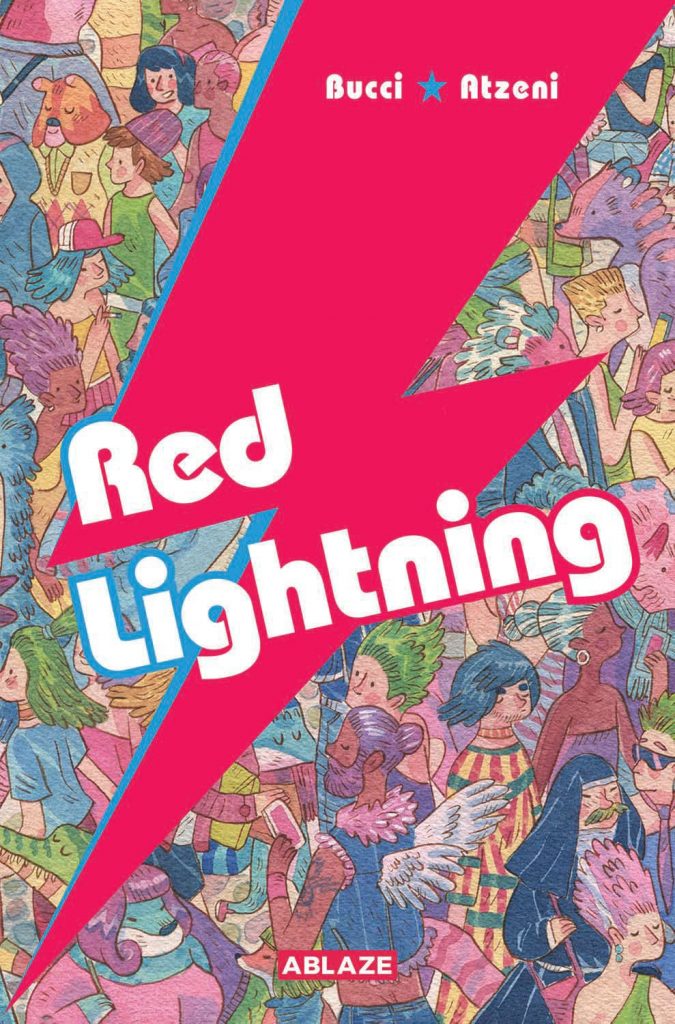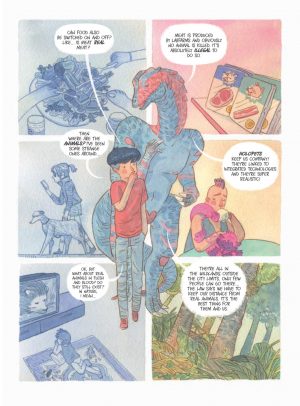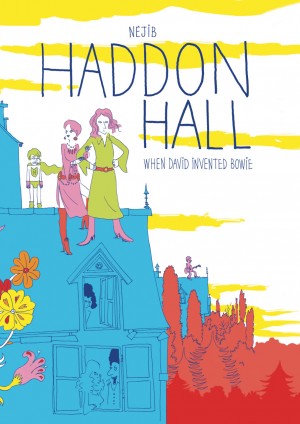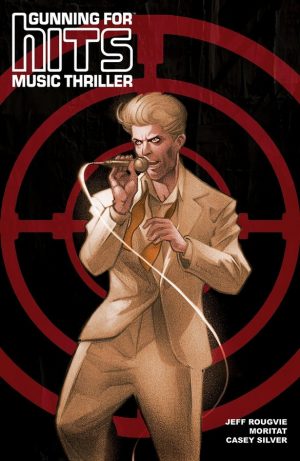Review by Ian Keogh
It takes a while to get a handle on Marco B. Bucci and Riccardo Atzeni’s fusion of science fiction and fantasy sparked by David Bowie’s death in 2016. His passing has a profound effect on Samuel/Samu, and the shock of processing the news as received on his phone freezes him in place until he awakes in the future. What at first seems a standard, if imaginative piece of world building, is eventually revealed to be a progressive statement on mental health, gender politics, body issues and information technology.
Atenzi is a skilled designer, but what really seals his vision of a generally friendly and inclusive future is the use of pastel colours as a form of wash. All surroundings are coloured, as if by programmed stage lighting, and it ensures the future looks very different from the present, a genuine step forward from the past. Also good is Samuel’s alienation as drawn by Atensi, reluctant to interact immersively with technology he doesn’t entirely understand.
While the ways of disguising mental problems are more sophisticated in the future, viable all-over body costumes for one, as far as human feelings and insecurities are concerned there doesn’t seem to be much progress. Sam’s future friend Edo is a mess of neuroses, and because Bucci’s created a gender-fluid world with many bells and whistles, it takes a considerable amount of explaining. However it’s necessary because although it looks that way for a while, Bucci isn’t just creating an idealised wish-fulfilment fantasy world. Ingrained bigotry isn’t an issue, but acclimatisation is, and that’s thrown into confusion as Samu’s phone suddenly updates with decades worth of messages from people concerned about his disappearance. These are all presented as texts over time, and introduce a heartbreaking resonance absent until then. The messages open a new door and offer a different perspective on what until then has seemed an idyllic future society, and Samu begins exploring the differences on offer.
A back cover blurb is keen to stress the influence of David Bowie, but that’s stretching things. The title is a reference to Bowie’s make up on the Aladdin Sane album sleeve, which here appears on a building, but otherwise has no relevance. Fans will certainly recognise other designs Atenzi filters in. The availability of shifting identities is Bowie-related, and the man himself manifests briefly, but the imagination and conceptual density is generated by Bucci and Atenzi. The ideas just keep coming from both creators, with global themes changing every six months, and visually rich environments, but it also leads to frustration when ideas aren’t explored, or are discarded, the social engineering being one.
While much of Red Lightning is exploration, a plot device flourishes in the final sequence, and is briefly and neatly dealt with. Ultimately, though, Red Lightning obviously concerns letting go of the past, but the real message is that it’s never too late to be what you want to be, and you’ll probably be happier that way.





